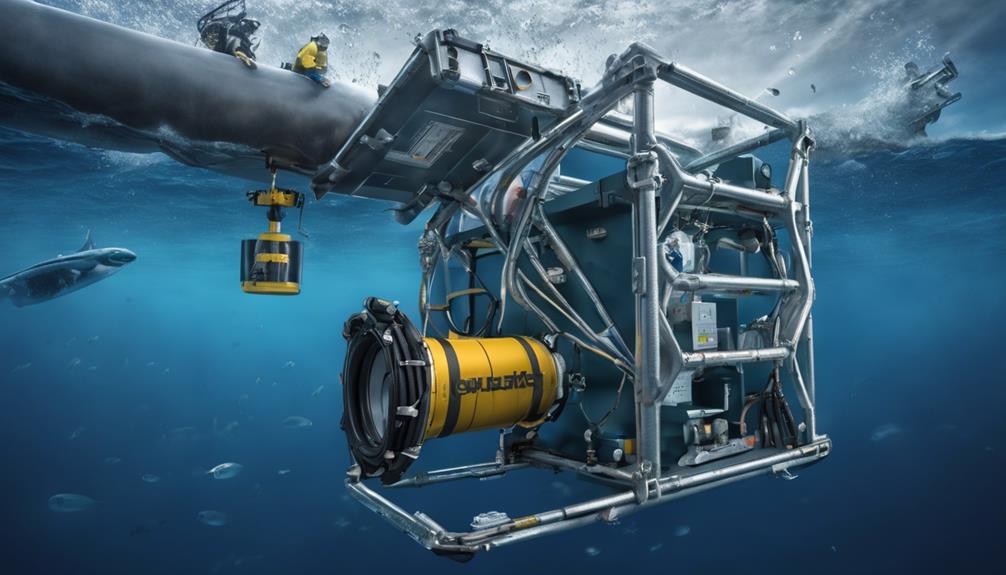In our examination of Sarah’s scenario, a young professional grappling with communication challenges at work, we observed the remarkable transformation brought about by recognizing her deep-seated personality characteristics via the Comprehensive Assessment Guide.
Unveiling the depths of our personalities can lead to profound self-discovery and improved interpersonal relationships. By unraveling the intricacies of how these traits shape our behaviors and interactions, we open doors to a world of personal growth and enhanced social dynamics.
Discover how unlocking your oceanic personality can pave the way for a more fulfilling and harmonious life.
Key Takeaways
- Embrace openness for new experiences and creativity.
- Develop conscientiousness for organized goal achievement.
- Leverage extraversion for enhanced social interactions.
- Cultivate agreeableness for better relationships and communication.
Understanding Oceanic Personality Traits
Understanding Oceanic Personality Traits involves delving into the core characteristics that shape an individual's preferences and behaviors.
Openness, one of the key traits, signifies a person's creativity and their willingness to explore new experiences. Individuals high in Openness tend to be imaginative, open-minded, and curious about the world around them.
On the other hand, Conscientiousness plays a vital role in determining how organized and dependable a person is in their actions. Those with high Conscientiousness are often detail-oriented, diligent, and focused on achieving their goals.
Effective Assessment Tools and Techniques

Exploring effective assessment tools and techniques is essential for gaining a comprehensive understanding of individuals' personality traits and behaviors. Utilizing tools like the OCEAN Personality Test and techniques such as Factor Analysis can provide valuable insights into various traits.
- Big Five Inventory: This assessment tool measures traits like openness, conscientiousness, extraversion, agreeableness, and neuroticism, offering a structured approach to personality evaluation.
- Factor Analysis: Employing this technique aids in the systematic breakdown of complex personality data, enabling the development of more accurate and detailed personality assessments.
- Cloud-Based Platforms: Platforms like AssessTEAM streamline the process of administering OCEAN personality tests, enhancing efficiency and accessibility for both individuals and organizations.
Applying Oceanic Traits in Personal Growth
To effectively harness the power of Oceanic traits for personal growth, individuals must consciously integrate the principles of openness, conscientiousness, extraversion, agreeableness, and neuroticism into their daily lives. Embracing openness to experience allows for exploration of new ideas and perspectives, fostering personal development. Developing conscientiousness aids in setting goals and maintaining discipline to achieve them. Leveraging extraversion can enhance social interactions and networking, leading to valuable personal connections. Cultivating agreeableness fosters harmonious relationships and effective communication, enriching one's social environment. Managing neuroticism helps in recognizing and addressing emotional responses, promoting resilience in the face of challenges. By recognizing and embracing our unique Oceanic traits, we pave the way for personal growth, increased resilience, and better adaptability to various situations.
| Trait | Description | Benefits |
|---|---|---|
| Openness | Willingness to try new things and think creatively | Enhanced self-awareness and adaptability |
| Conscientiousness | Organized, goal-oriented, and reliable approach to tasks | Improved productivity and goal achievement |
| Extraversion | Outgoing, social, and energetic nature | Stronger relationships and networking abilities |
| Agreeableness | Compassionate, cooperative, and empathetic demeanor | Harmonious relationships and effective communication |
Navigating Conflict Resolution With Oceanic Traits

Promoting cooperation and support during conflict resolution, Oceanic traits like agreeableness play a crucial role in navigating challenging interpersonal situations.
Understanding one's level of neuroticism can aid in managing emotional reactions and anxiety, fostering a more harmonious resolution process.
Leveraging extraversion enables individuals to engage in open communication and assertiveness, essential for addressing conflicts directly and constructively.
Additionally, utilizing conscientiousness traits can lead to a structured approach, ensuring that conflicts are addressed systematically and thoroughly.
Openness to experience further enhances conflict resolution by encouraging innovative problem-solving techniques and promoting adaptability in finding solutions.
By embracing these Oceanic traits, individuals can cultivate an environment where conflicts are opportunities for growth and understanding rather than sources of discord.
Embracing agreeableness, managing neurotic tendencies, and leveraging extraversion can transform conflicts into catalysts for positive change in relationships and personal development.
Harnessing Oceanic Traits for Team Dynamics
By analyzing team dynamics through the lens of Oceanic traits, we can unlock the potential for enhanced collaboration and performance. Understanding how personality traits influence team dynamics is key to optimizing workflow and fostering a balanced and effective team. By identifying strengths and weaknesses within a team based on Oceanic traits, we can tailor team building activities to improve communication and synergy. Utilizing these traits not only enhances collaboration but also leads to a positive work environment, boosting morale. Team dynamics play a crucial role in achieving common goals, and harnessing Oceanic traits is a strategic way to ensure that teams function cohesively. Below is a table illustrating how different Oceanic traits can impact team dynamics:
| Personality Traits | Influence on Team Dynamics |
|---|---|
| Adaptability | Enhances flexibility and problem-solving skills |
| Empathy | Improves communication and understanding among team members |
| Optimism | Boosts morale and fosters a positive work environment |
Frequently Asked Questions
How Do You Pass a Personality Assessment Test?
We pass a personality assessment test by answering honestly, ensuring our responses reflect our true selves. Consistency in our answers is key to providing an accurate personality profile. Trying to manipulate the results can hinder the assessment's effectiveness.
What Is the OCEAN Model of Personality Assessment?
The OCEAN model of personality assessment evaluates individuals on five key traits: Openness, Conscientiousness, Extraversion, Agreeableness, and Neuroticism. It provides a structured framework for understanding and categorizing personality traits based on empirical research and factor analysis.
Widely used in psychological studies and personal development, OCEAN model captures specific aspects of personality, offering insights into behavior and interpersonal dynamics. It's a valuable tool for enhancing self-awareness, communication skills, and leadership development.
What Are the 5 Main Components of Personality Represented by the OCEAN Model Discussed in Chapter 12?
We're diving into the depths of personality with the OCEAN model. This framework breaks it down into five key components: Openness, Conscientiousness, Extraversion, Agreeableness, and Neuroticism.
Each trait offers a unique glimpse into who we are. From creativity to responsibility, sociability to emotional stability, the OCEAN model paints a vivid picture of our personalities.
What Is the Most Accurate Personality Test?
The most accurate personality test is often considered to be the Big Five Personality Test, known for its comprehensive assessment of five key traits.
Developed through factor analysis, this test demonstrates stability and universality in evaluating personality traits.
Widely used in psychology, human resources, and team dynamics, it assesses individuals across openness, conscientiousness, extraversion, agreeableness, and neuroticism.
This tool provides valuable insights into individual preferences and behaviors, aiding in candidate selection, team building, and communication strategies.
Conclusion
In conclusion, unlocking our oceanic personality traits is the key to unleashing our full potential and achieving success in all aspects of life.
By understanding and harnessing the power of Openness, Conscientiousness, Extraversion, Agreeableness, and Neuroticism, we can navigate conflicts, enhance teamwork, and facilitate personal growth like never before.
Embrace your oceanic traits and watch as your true self shines through in every endeavor.
Eugene brings a fresh, dynamic voice to our platform as one of our talented Writers. Specializing in research-driven content, he explores the latest findings in psychology and personal growth, translating them into actionable insights for our readers. Eugene’s work is fueled by a curiosity about what makes us tick and a desire to help others unlock their potential.










